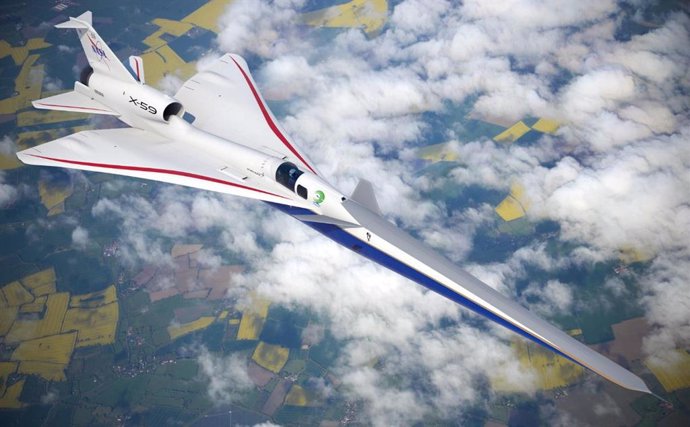Artist’s illustration of the X-59 in flight over land. – LOCKHEED MARTIN
May 17. () –
NASA has taken the next step toward airworthiness verification of its silent X-59 supersonic aircraft with the completion of an overhaul that will allow it to move towards flight.
A flight readiness review board composed of independent experts from across NASA has completed a study of the X-59 project team’s approach to safety for the public and personnel during ground and flight testing. The review board reviewed in detail the potential hazard analysis performed by the project team, focusing on safety and risk identificationthe agency reports it’s a statement.
The flight readiness review is the first step in the flight approval process. something that NASA plans to become a reality this year. The board’s work will provide the X-59 team with information and recommendations for ground and first flight systems verification.
REDUCED SONIC BURST FOR FLYING OVER POPULATED AREAS
NASA and prime contractor Lockheed Martin are developing the X-59 to reduce the noise from the sonic boom of these aircraft when they break the sound barrier. The plane is at the center of NASA’s Questst mission, which will use it to collect data that could revolutionize air travel, potentially paving the way for a new generation of commercial airliners that can travel faster than the speed of sound.
Commercial supersonic flights over land have been Banned for over 50 years due to noise from sonic booms.
Once the flight readiness review is completed, the next airworthiness and flight safety review will be the next safety milestone.
The Airworthiness and Flight Safety Review board includes senior leaders from several NASA centers and Lockheed Martin. You will review the findings of the Flight Readiness Review as well as the project team’s response to those submissions. The board will send a recommendation to the director of NASA’s Armstrong Flight Research Center, who signs the certificate of airworthiness.
Finally, the team will provide a technical report to another review board based on the objectives of the testing, how the testing is being conducted, the risks involved, and the risk mitigation actions the team has taken.


![[Img #74662]](https://thelatestnews.world/wp-content/uploads/2024/12/Organisms-with-the-shortest-life-150x150.jpg)










![[Img #74662]](https://thelatestnews.world/wp-content/uploads/2024/12/Organisms-with-the-shortest-life-300x200.jpg)


Add Comment